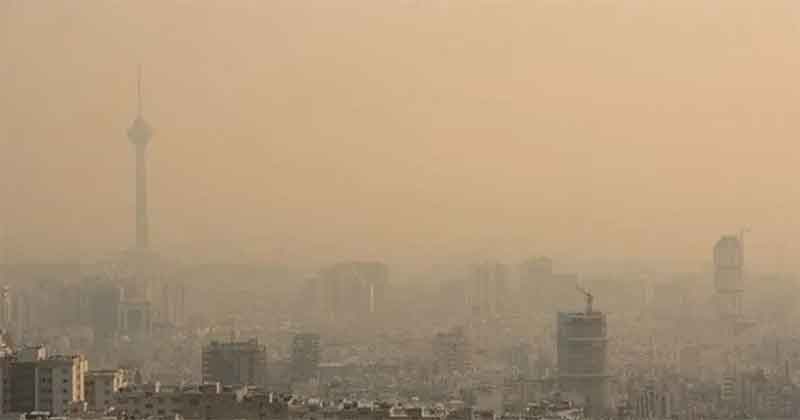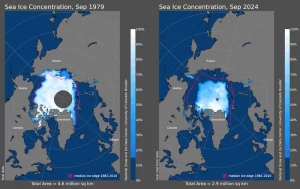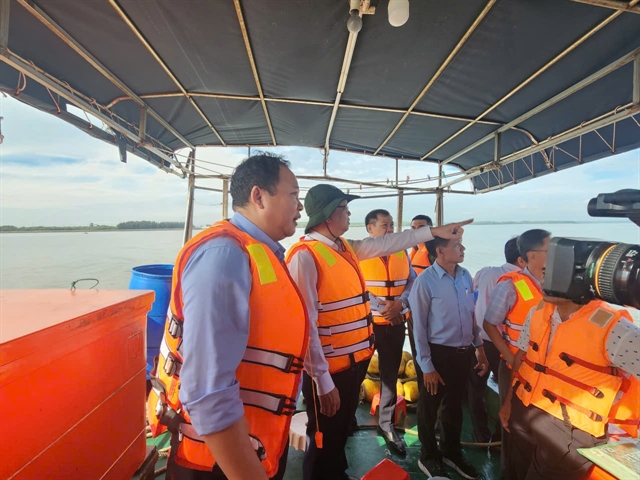Ocean life rebounded quickly after Earth’s worst extinction event – Earth.com

Report on Rapid Marine Ecosystem Recovery Following the End-Permian Extinction and Implications for Sustainable Development Goals
Executive Summary
A paleontological study of a fossil-rich site in Spitsbergen, Norway, has revealed that marine ecosystems recovered from the end-Permian mass extinction approximately 252 million years ago far more rapidly than previously understood. Research conducted by the University of Oslo and the Swedish Museum of Natural History indicates the re-establishment of a complex marine food web within three million years of the event. This finding has significant implications for understanding ecosystem resilience and directly informs strategies related to Sustainable Development Goal 14 (Life Below Water) and Sustainable Development Goal 13 (Climate Action), by providing a historical analogue for current environmental stressors.
Historical Context: A Planetary Crisis and its Relevance to SDG 13
The end-Permian extinction, the most severe in Earth’s history, provides a crucial case study for the large-scale environmental changes targeted by the Sustainable Development Goals. The event was characterized by conditions that parallel modern climate concerns.
Drivers of the Mass Extinction
- Intense volcanic activity released massive quantities of greenhouse gases.
- Global temperatures rose significantly.
- Oceans experienced severe acidification and deoxygenation.
This prehistoric crisis, which eliminated over 90 percent of marine species, serves as a stark historical precedent for the challenges addressed by SDG 13 (Climate Action), highlighting the catastrophic potential of unchecked climate change on a global scale.
The Spitsbergen Discovery: Evidence of Rapid Recovery
Excavations in Spitsbergen uncovered a dense “bone-bed” dating to just three million years post-extinction. The findings challenge the long-held theory of a slow, multi-million-year recovery, offering new insights into the resilience of marine biomes, a core concern of SDG 14 (Life Below Water).
Key Findings from the Fossil Analysis
- High Fossil Density: Over 800 kilograms of fossils, including shark teeth, reptile skeletons, and coprolites, were recovered from a 36-square-meter area, indicating a thriving, populous ecosystem.
- Complex Trophic Structure: The fossil assemblage revealed a complete food web, from small squid-hunting ichthyosaurs to large apex predators, demonstrating the rapid re-establishment of ecological complexity.
- Species Diversity: The presence of various ichthyosaurs, early archosauromorphs (crocodile relatives), and amphibians indicates that multiple ecological niches were filled swiftly.
This evidence suggests that following the stabilization of environmental conditions, surviving lineages expanded rapidly to rebuild a functional, albeit altered, marine ecosystem.
Implications for Sustainable Development Goal 14: Life Below Water
The Spitsbergen findings provide critical lessons for the conservation and sustainable management of modern marine environments as outlined in SDG 14.
Lessons in Ecosystem Resilience and Reorganization
- Rapid Reorganization: The study demonstrates that life can reorganize with surprising speed after a catastrophic collapse. Mass extinctions create ecological vacuums that surviving species can rapidly exploit.
- Altered Ecosystems: While recovery was fast, the new Triassic ecosystem was fundamentally different from its Permian predecessor. This underscores that recovery does not mean a return to the original state, a vital consideration for modern conservation efforts.
- Pre-Adaptation: Evidence suggests some marine reptiles may have begun adapting to marine life before the extinction, giving them an advantage when the crisis cleared competitors. This highlights the role of evolutionary innovation in resilience.
Conclusion: A Historical Perspective for Modern Environmental Stewardship
The rapid recovery of marine life after the end-Permian extinction offers a dual message for contemporary efforts related to the Sustainable Development Goals. It reveals the profound resilience of life, a central tenet for hope in conservation. However, it also serves as a warning. The modern pressures on our oceans—acidification, warming, and deoxygenation—mirror the drivers of the ancient extinction. The Spitsbergen fossils demonstrate that while life will ultimately endure, the ecosystems that emerge from such a crisis may be radically different and potentially less hospitable to the species, including humans, that depend on the current configuration. This historical insight reinforces the urgency of achieving the targets of SDG 13 and SDG 14 to prevent a comparable ecosystem collapse and preserve the marine biodiversity that supports global systems.
SDGs Addressed in the Article
SDG 14: Life Below Water
- The article’s primary focus is on marine life, its collapse during a mass extinction event, and its subsequent recovery. It directly discusses the health of ocean ecosystems, both past and present. The section “Lessons for modern oceans” explicitly connects the historical findings to current threats facing marine environments, stating, “Modern oceans face rising temperatures, deoxygenation, and acidification again.”
SDG 13: Climate Action
- The article links the ancient mass extinction to climate-altering events, noting that “Volcanic eruptions tore through the supercontinent Pangaea, turning air toxic and oceans acidic. Temperatures rose, oxygen dropped, and ecosystems collapsed.” It draws a direct parallel to the present day by highlighting that “Modern oceans face rising temperatures,” a key concern of climate action.
SDG 15: Life on Land
- Although the focus is marine, the article discusses a planetary-scale event where “ecosystems collapsed.” It mentions amphibians that split their time “between land and sea,” indicating the interconnectedness of ecosystems. The core theme of biodiversity collapse (“wiped out more than 90 percent of marine species”) and ecosystem recovery is central to the goals of protecting life on Earth.
Specific Targets Identified
SDG 14: Life Below Water
-
Target 14.2: By 2020, sustainably manage and protect marine and coastal ecosystems to avoid significant adverse impacts, including by strengthening their resilience, and take action for their restoration in order to achieve healthy and productive oceans.
- The article provides a historical case study of a marine ecosystem’s collapse and subsequent restoration. The research aims to “understand how ecosystems reorganize under stress,” which the article notes is “knowledge that might shape how humanity manages the crisis unfolding now,” directly relating to managing, protecting, and restoring marine ecosystems.
-
Target 14.3: Minimize and address the impacts of ocean acidification, including through enhanced scientific cooperation at all levels.
- The article identifies “oceans acidic” as a primary driver of the historical extinction and warns that modern oceans face “acidification again.” The entire study, a collaboration between the University of Oslo and the Swedish Museum of Natural History, exemplifies the scientific cooperation needed to understand and address this issue.
-
Target 14.a: Increase scientific knowledge, develop research capacity and transfer marine technology, taking into account the Intergovernmental Oceanographic Commission Criteria and Guidelines on the Transfer of Marine Technology, in order to improve ocean health and to enhance the contribution of marine biodiversity to the development of developing countries, in particular small island developing States and least developed countries.
- The research project described in the article is a direct example of increasing scientific knowledge. The work involving excavating, cataloging fossils, and running computer simulations represents the development of research capacity to understand marine ecosystem resilience.
SDG 13: Climate Action
-
Target 13.3: Improve education, awareness-raising and human and institutional capacity on climate change mitigation, adaptation, impact reduction and early warning.
- The article itself serves as a tool for education and awareness-raising. By presenting the story of a past climate-induced catastrophe, it provides a stark “lesson for modern oceans” and raises awareness about the potential consequences of current climate change, such as rising temperatures and deoxygenation.
SDG 15: Life on Land
-
Target 15.5: Take urgent and significant action to reduce the degradation of natural habitats, halt the loss of biodiversity and, by 2020, protect and prevent the extinction of threatened species.
- The article’s narrative is centered on the “biggest extinction” in Earth’s history, which “wiped out more than 90 percent of marine species.” This historical account underscores the severity of biodiversity loss and serves as a powerful argument for taking urgent action to prevent similar events from occurring due to modern pressures.
Indicators Mentioned or Implied
SDG 14: Life Below Water
-
Implied Indicator for Target 14.3 (related to Indicator 14.3.1: Average marine acidity (pH)):
- The article repeatedly refers to “acidic oceans” and “acidification” as a critical environmental condition, both in the past and present. This directly implies the measurement of ocean acidity (pH) as a key indicator of ocean health.
-
Implied Indicator for Target 14.2 (Ecosystem Health):
- The article describes the recovered ecosystem by its complexity and structure: “a lively, competitive world,” “full ecosystems, complete with hunters, scavengers, and prey,” and “food chains rebuilt from the bottom up.” These descriptions of biodiversity, species variety, and trophic structure are qualitative indicators of a healthy and resilient ecosystem.
SDG 13: Climate Action
-
Implied Indicator for Climate Change Impacts:
- The article mentions key physical and chemical changes that serve as indicators of climate change. These include “rising temperatures” and “deoxygenation” (“oxygen dropped”), which are critical metrics used to measure the impact of climate change on planetary and ocean systems.
SDG 15: Life on Land
-
Implied Indicator for Target 15.5 (related to Indicator 15.5.1: Red List Index):
- The article provides a stark measure of biodiversity loss by stating the extinction event “wiped out more than 90 percent of marine species.” This percentage of species loss is a direct, albeit historical, indicator of the collapse of biodiversity, which is what modern indicators like the Red List Index aim to track.
Summary Table of SDGs, Targets, and Indicators
| SDGs | Targets | Indicators |
|---|---|---|
| SDG 14: Life Below Water |
14.2: Manage and protect marine ecosystems.
14.3: Minimize and address ocean acidification. 14.a: Increase scientific knowledge and research capacity. |
Implied: Measures of ecosystem health (e.g., biodiversity, food chain complexity).
Implied: Marine acidity (pH) levels, as referenced by the term “acidification.” Implied: Number of scientific studies and international collaborations. |
| SDG 13: Climate Action | 13.3: Improve education and awareness-raising on climate change. | Implied: Measures of climate change impacts such as “rising temperatures” and “deoxygenation.” |
| SDG 15: Life on Land | 15.5: Halt biodiversity loss and prevent extinction. | Implied: Rate of species extinction, as referenced by “wiped out more than 90 percent of marine species.” |
Source: earth.com
What is Your Reaction?
 Like
0
Like
0
 Dislike
0
Dislike
0
 Love
0
Love
0
 Funny
0
Funny
0
 Angry
0
Angry
0
 Sad
0
Sad
0
 Wow
0
Wow
0














































































